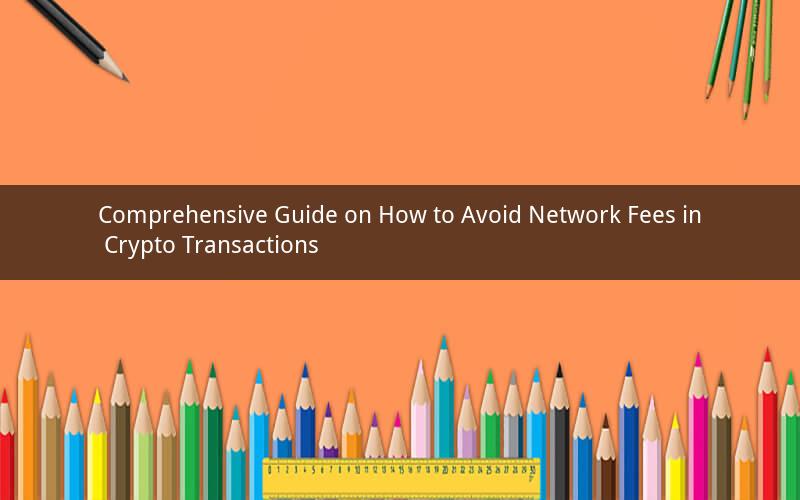
Introduction:
In the rapidly evolving world of cryptocurrencies, network fees have become a significant concern for many users. High network fees can eat into your profits and make transactions less cost-effective. However, there are several strategies you can employ to minimize or avoid network fees altogether. In this article, we will discuss various methods to help you navigate the crypto landscape without breaking the bank.
1. Choose the Right Blockchain
The first step in avoiding network fees is to select a blockchain that has lower transaction costs. Some blockchains, such as Bitcoin, have high fees due to their limited block size and high demand. In contrast, others like Ethereum, Binance Smart Chain, and Cardano offer more cost-effective transactions.
2. Optimize Transaction Size
The size of your transaction plays a crucial role in determining the fee you will pay. Large transactions require more data, which can increase the fee. To optimize your transaction size, consider the following:
- Remove unnecessary data: Ensure that your transaction only contains essential information, such as the recipient's address and the amount to be transferred.
- Use a wallet with built-in optimization: Some wallets have features that automatically optimize your transaction size and reduce fees.
3. Wait for Network Congestion to Subside
Network congestion can lead to skyrocketing fees, especially during peak times. To avoid high fees, monitor the network congestion and wait for it to subside. You can use various tools and websites to track congestion levels, such as Blockchain.com and BitInfoCharts.
4. Use Layer 2 Solutions
Layer 2 solutions, such as the Lightning Network for Bitcoin and the Optimism and Arbitrum networks for Ethereum, offer a cost-effective way to process transactions off the main blockchain. These solutions provide faster and cheaper transactions by utilizing off-chain channels and batching transactions together.
5. Opt for a Low-Fee Blockchain Wallet
The wallet you choose can also impact your transaction fees. Some wallets are designed to prioritize cost-effectiveness, while others may focus on security or user-friendliness. When selecting a wallet, consider the following:
- Look for wallets that support low-fee blockchains or layer 2 solutions.
- Choose a wallet with a built-in fee estimation tool to help you determine the optimal fee for your transaction.
6. Use a Service Provider
If you frequently engage in cryptocurrency transactions, consider using a service provider that offers discounted or free transactions. Many exchanges and crypto platforms offer this benefit to their users, allowing them to save on fees.
7. Stay Informed about Network Updates
Network updates can significantly impact transaction fees. By staying informed about upcoming changes, you can prepare for potential fee spikes or reductions. Keep an eye on blockchain development news and forums to stay updated.
8. Utilize Cryptocurrency Swaps
Cryptocurrency swaps can be a great way to avoid network fees, especially if you're looking to exchange one cryptocurrency for another. Many exchanges offer free or low-fee swaps, allowing you to save on transaction costs.
9. Minimize the Number of Transactions
Reducing the number of transactions you make can also help lower your fees. Instead of making multiple small transactions, consider consolidating them into a single transaction.
10. Keep Your Wallet Updated
Outdated wallets may not support the latest features and optimizations that can help reduce fees. Ensure that you're using the most recent version of your wallet to take advantage of any improvements.
Frequently Asked Questions:
1. How can I find out the current network congestion level?
You can use websites like Blockchain.com and BitInfoCharts to track the network congestion level for various blockchains.
2. Are there any risks associated with using layer 2 solutions?
Layer 2 solutions can be vulnerable to issues such as scaling and security. However, many reputable projects have implemented robust solutions to address these concerns.
3. Can I still use a regular wallet for layer 2 transactions?
Yes, you can use a regular wallet to access layer 2 solutions. However, ensure that your wallet supports the specific layer 2 network you intend to use.
4. Are there any limitations to using cryptocurrency swaps?
Cryptocurrency swaps can be subject to limitations, such as supported cryptocurrencies and transaction limits. Always read the terms and conditions before using a swap service.
5. How can I keep track of network updates?
Stay informed by following blockchain development news, forums, and official announcements from the respective blockchain projects.